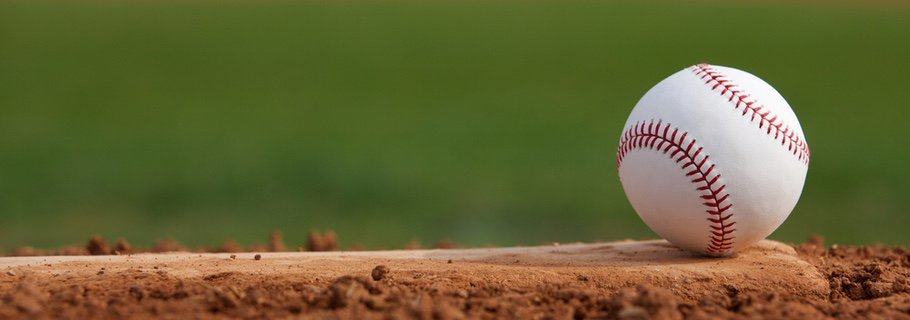Baseball returns this evening from its annual mid-season classic. As the teams prepare to take the field I find myself thinking about the game I love, the game that has gripped and fascinated me for as long as I can remember. It is, to my mind, the best sport, the perfect game.
As a child I dreamed of mastering baseball and spent hundreds of sunny summer afternoons chasing the perfect fastball, the perfect swing, the perfect one-hopper from left field to the plate. When night came I fell asleep listening to Tom Cheek and Jerry Howarth as they called the highs and lows of the Toronto Blue Jays and when sleep took me I dreamed of taking my rightful place on my team—George Bell, Tony Fernandez, Dave Stieb, and me. Eventually childish fantasy gave way to adult reality but even broken dreams did nothing to temper my passion for the game. A son was born and soon I began to introduce him to my game and to my team. The cycle began anew.
What is it about this game? Why is it that every April I feel a new optimism, a new hope, a new excitement for a new season? Why is it that every October I find myself longing for just a few more games, a few more series? Why do I have such love for this game?
I Love the Challenge
Baseball is a game whose official rules extend to 172 pages and in these pages you will find provision for every eventuality from the routine and everyday to the obscure and nearly unthinkable. But for all the complexity, the heart of the game is so very simple—a man with a ball stands 60 feet, 6 inches from a man with a stick. The man with the ball pauses, he stares, he comes set, and for a moment remains perfectly still. Then he moves again in a careful choreography. His hands rise to his chest or his head, his knee comes up to his waist, his foot kicks outward, and as he plunges toward home plate his hand darts forward. Freeze the frame and you will see him clutching the ball, sometimes with his fingers split across two seams, sometimes with his fingers split across four, sometimes with the ball deep in his palm, sometimes with it nearly floating beneath his fingertips. Unfreeze. With a flick of the wrist it is gone and a mere four tenths of a second later it has slammed into the catcher’s mitt with the familiar smack.
Unless, of course, the man with the stick has had his way. Facing the pitcher is a batter and as the pitcher has been preparing to throw the ball, this man has been moving and shifting his own body, preparing to protect the plate. Before the ball is thrown he stands ready, his fingers loose on his bat, his wrists slowly rotating, his eyes fixed intently on the place where the pitcher’s hand will soon be. He shifts his weight back, lifts his front foot, and rotates his hips to the front as his arms begin to swing. If he times and judges it just right, he will hear the sound of summer, the sharp crack of ball on bat.
This, I’m convinced, pitcher against batter, is the greatest one-on-one challenge in professional sports. This little game within the game, played out hundreds of times every night, never gets old, never loses its thrill.
I Love .200, .300, .400
Baseball is a game of numbers, the sport of a thousand statistics. The most basic of them all is the batting average, the age-old measure of a batter’s raw ability to put bat to ball. It is best understood as the number of times the player will deliver a base hit if given 1,000 opportunities. The difference between a .200 batting average and a .300 batting average is merely 1 hit in every 10 at bats—just 100 hits in 1000 attempts. Yet that slim margin represents the difference between a bona fide superstar and a man looking for a new line of work. In almost every case a .200 hitter will be sent back to the minors or, at best, relegated to a part-time role. In almost every case a .300 hitter will be a star and receive a fat contract. As for that .400 hitter, there has not been one of them in over seventy years. How difficult is it for the man with the stick to beat the man with the ball? If he succeeds 2 times in 10 attempts he is a has-been, 3 times he is a star, 4 times he is a legend.
I Love the Fastball
The fastball is the one pitch every pitcher needs to master and to have as part of his repertoire. For all the talk of sliders and curves and sinkers, there is nothing more elemental than a pitcher overpowering a batter with that high heat. He might throw the venerable four-seamer which flies straight and true or opt for the two-seamer which tails off as it reaches the plate. Better yet, he will throw a mix of the two to keep the batter guessing. He will paint the corners, he will lure him and get him to chase, he will move up and down in the zone, he will assert his dominance. Baseball is at its purest when a fireballing pitcher stares down a red-hot slugger.
I Love the Change-Up
The purity and simplicity of the fastball is off-set by the dirtiness and deception of the change-up. The change-up is a pretender, a mimic, a cheat. It wears the guise of a fastball—the same look, the same action, the same motion—but it travels at a very different pace. This makes it a risk. The slow-moving change may as well be batting practice if the batter knows it’s coming. So the wise pitcher first displays his fastball. He throws it once, twice, three times. Now the batter has the measure of it, he is ready for the next one. But right here the pitcher judges the change-up worth the risk and springs his little surprise. Where the fastball zipped, this ball saunters, where the fastball stayed straight and true, this one falters and sinks. The batter is fooled, swinging long before the ball reaches the plate or perhaps finding himself stock still, tied in knots, helplessly watching as it chugs on by. Nothing makes an experienced pro look more like a rank amateur than a change-up perfectly set-up and perfectly executed.
I Love 60 Feet, 6 Inches
The integrity of baseball depends upon 2 crucial measurements, each of which brings parity to an aspect of the game. The first measurement is 60 feet, 6 inches, the distance from the pitcher’s mound to home plate. That perfect distance brings perfect parity between the man with the ball and the man with the stick. Any closer and a fastball would be unhittable—the batter would have too little time to read the pitch, to judge it, to take his swing. Any farther and the pitcher would have too far to throw—the advantage would swing to the batter. But 60 feet, 6 inches is just right, ensuring that only the best pitchers and hitters are able to survive, and only the best of the best are able to thrive.
I Love 90 Feet
If the first great measurement is 60 feet, 6 inches, the second is 90 feet, the distance between the bases. It, too, is perfect because it, too, sets the perfect parity—parity between offence and defence, between runners and fielders. Even the greatest base-stealer must choose his moments carefully lest he be unceremoniously cut down. But even the greatest defense must be vigilant lest they be caught flat-footed and give up an easy base. At 85 feet defences would suffer and at 95 runners would have too far to go. Watch a runner steal second base and see how close he comes to being tagged. Watch a batter leg out an infield single and see that with another 5 feet, or 2 feet for that, he would be an easy out. It is the perfect distance to maintain the challenge just as it ought to be.
I Love 325 Feet
Baseball depends upon precise measurements—60 feet, 6 inches from the pitcher to the plate, 90 feet from base to base—but it finds its character in imprecise ones. Beyond those few, precise measurements there are any number of ways the game is quirky and customized. A field for professional soccer or football is identical to every other, but when it comes to baseball, every field is different, every one has its unique personality. There is the 325-foot short porch in AT&T field’s right corner, the imposing Green Monster rising up in Boston’s left field, the infamous double and home run catwalks jutting over the field in Tampa Bay, the ivy-covered walls in Wrigley Field. Some parks have fast-playing grass and others have slow-playing turf. Every field is different, every field an individual.
I Love the Shift
Actually, I don’t love the shift, but I do love what it represents. It represents strategy, the measures teams take to gain even a small advantage over their rivals. Yet with any benefit there is risk. A team may put on the shift to gain double coverage in one part of the field but to do this they must abandon another section altogether. They pull in the infield to try to make an out at the plate but this increases the risk of a hot hit scorching through. They guard the runner to keep him from the easy steal but this widens the gap between first and second. Or maybe they choose not to guard him at all but this offers him a tempting head-start if he decides to steal. Through the ebb and flow of a game each player will position himself a hundred different ways to account for a hundred different scenarios. Behind every moment of action is a deliberate strategy.
I Love the Game
Perhaps the greatest beauty in baseball is the vast chasm between its apparent simplicity and its actual difficulty. It is and remains the greatest one-on-one showdown in sports. There is nothing quite like it. Free throws, penalty kicks, penalty shots, 55-yard field goals each have their own challenge, their own thrill. But there is nothing as pure and nothing as thrilling as a man with a ball trying to blow it past that man with a stick.
Image credit: Shutterstock










